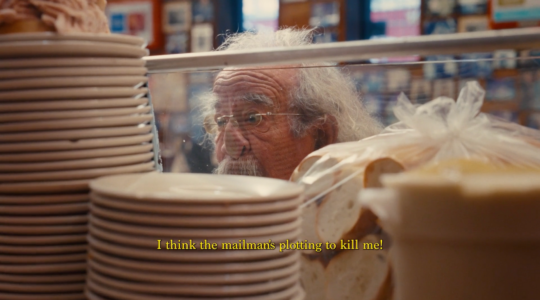WASHINGTON — Spend some time on YouTube and you can learn quite a bit about Jews.
They are responsible for the assassination of John F. Kennedy; they are behind the worldwide distribution of pornography; they are the enemies of the Catholic Church; and they peddle an undue influence on American policy — the United States Congress, for instance, is controlled by Jewish money.
At least, that’s what you might think if you watch — and take to heart — the hours and hours of easily available YouTube videos that promote foul anti-Semitic conspiracy theories.
Despite the video-sharing website’s June 2019 crackdown on hate speech, in which it updated its policy to prohibit videos that advance ideologies such as white supremacy, clips which deny historical atrocities including the Holocaust, or posts justifying discrimination against other protected classes, there remains a vast reservoir of bigoted invective and extremism on the platform.
According to a recent analysis by the Anti-Defamation League, much of the same kind of hateful content remains on the site, despite YouTube’s recent promise to do better.
“In the time since then, we’ve been able to locate more than 30 channels that continue to disseminate anti-Semitism and bigotry and white supremacy,” Aryeh Tuchman, associate director of the ADL’s Center on Extremism, told The Times of Israel.
The Jewish watchdog group found that five of those channels “promulgate a variety of allegations and tropes which have been used for generations to stoke fear and hatred of Jews.”
But it’s not bad enough that these channels exist. Some of them have massive followings.
One such channel is called TruNews, a fundamentalist Christian platform that regularly releases anti-Semitic, Islamophobic and homophobic videos. It has more than 185,000 subscribers — and its videos have garnered 17 million views.
The channel’s founder and host Pastor Rick Wiles is widely known for his anti-Semitic conspiracy theories. He uses the platform to argue that Jews control the media, present a danger to Christians everywhere, and are, in his words, the “Synagogue of Satan.” In a February 20 post, Wiles said, “It’s not Muslims that are going to kill us. It’s the Jews.” In March, he declared, “I personally believe Israel took out John Kennedy.”
https://youtu.be/N7GIMt6Dslc
Other anti-Semitic channels that the study’s researchers discovered on YouTube include “Sanderson1611,” “E. Michael Jones,” “Brother Nathaniel Video,” and “Michael Hoffman.” (“Sanderson1611” and “Michael Hoffman” have since been been taken down.)
E. Michael Jones’s YouTube channel has 37,000 subscribers and has marshaled more than 3.5 million views. In his videos, he has made sweeping pronouncements about the malicious effect of Jewish control over the US government.
“Money runs the entire congress of the United States. And largely Jewish money when it comes to foreign policy,” he said in a June 2019 video that got more than 21,000 views. “AIPAC controls the American Congress. There’s no question … Congress is controlled by Jewish money.”
In July, he called the Jews “the enemies of the entire human race.” That post garnered more than 22,000 views, according to the ADL.
What’s more, Michael Hoffman’s channel, the ADL added, has featured videos that have denied the Holocaust and have argued that Judaism condones pedophilia.
https://youtu.be/0Pl3tj3v6P0
In its survey, the ADL further identified 24 other channels that espouse white-supremacist ideology and conspiracy theories.
Support the New York Jewish Week
Our nonprofit newsroom depends on readers like you. Make a donation now to support independent Jewish journalism in New York.
A YouTube official, who did not comment on individual cases, said that in some cases videos have been removed from the channels if they violate the code of conduct, but not necessarily the channels themselves.
The reasoning, he said, would come down to whether the channel was “wholly dedicated” to hate speech.
“Enforcement will ramp up over time — keep in mind that it has only been less than two months since we launched,” the YouTube spokesman told The Times of Israel. “We’ve already removed thousands of accounts and tens of thousands of videos that were wholly dedicated to hate speech, as defined by our new policies.
“Generally,” he went on, “for many other channels, who may have had some videos that violated our policy but were not wholly dedicated, we removed videos that were uploaded before the policy launch without penalty.”
As of this writing, three of the five channels the ADL recognized as anti-Semitic remain on the site. So, too, do 18 of the 24 others that it identified as white supremacist.
“Since we updated our hate speech policy in June 2019, we have removed videos from the list of channels in the report,” the YouTube official clarified. “Any video uploaded after the launch that violates our policies will be subject to our three-strikes system [before the channel is taken down]. Repeat offenders will be removed.”
What more can be done?
It can be a tricky line to draw between what constitutes legally protected free speech and what constitutes hate speech. Whether the latter is a First Amendment right remains a vigorous debate inside the US legal community. The discussion has spurred a robust fight over what kind of content should be allowed on YouTube — the world’s most popular video-sharing platform.
While the ADL’s Tuchman called YouTube’s June 2019 policy update “an important step forward,” he pointed to a number of other flaws that he said needed addressing. The first was that white supremacists and anti-Semites are taking advantage of a tool on the website to communicate and even raise money for the white nationalist cause.
Through the “super chat” feature, users on YouTube are able to comment on live-streamed videos in real time and interact with each other. At the same time, the channel can post solicitations for donations.
“They have made it very easy for anti-Semitic ideologues to just have conversations with their followers, which adds a whole new facet and element to the ability of these anti-Semites and white-supremacists to marshal supporters to respond to questions or elaborate on ideas in real time, as a result of the super chat feature,” Tuchman said. “If you watch the anti-Semitic videos, you’ll see donations being made as they are ongoing.”
“I don’t have figures on how much money the extremists are bringing in as a result of using this built-in tool on YouTube, but they’re definitely doing so,” he added.
Tuchman also advocated for two other solutions to ameliorate the problem.
One was for YouTube to change its algorithm so it doesn’t suggest more extremist videos to users who have already watched similarly bigoted content. “They could modify their algorithm to to not exacerbate or further radicalize users by queuing more extremist videos,” he said.
Support the New York Jewish Week
Our nonprofit newsroom depends on readers like you. Make a donation now to support independent Jewish journalism in New York.
The other, Tuchman continued, was to consult with experts on extremism and white supremacy to respond to shrewd users who find ways to get around YouTube’s moderators.
“One of the ways that white supremacists and anti-Semites are able to evade the censors is by using coded language, which is very difficult to deal with because when you use coded language there is plausible deniability,” he said.
An example that ADL researchers have found, for example, revolves around one of the most common white-supremacist theories, what’s often called “the replacement problem” — the belief that there’s a concerted effort to supplant the white race with racial and ethnic minorities. This was famously on display when neo-Nazis were chanting “Jews will not replace us!” at the Charlottesville rally in August 2017.
Now, Tuchman said, white supremacists are simply referring to this theory as the “R problem” to avoid flagging the platform’s monitors.
“But anyone who understands the people making these videos knows what they are trying to do,” he said. “I think YouTube could definitely do better by consulting with experts who are aware of the coded language that white supremacists and anti-Semites use to evade the moderators.”
For now, however, YouTube remains a communal launching pad where extremists can spread their ideas and connect with likeminded people.
After a quick search, one can find Richard Spencer, one of the world’s most famous Nazi sympathizers, on with the host of a channel called the “The Public Space,” opining about the Democratic primary debate last month and, in no ambiguous terms, discussing the white nationalist agenda. More than 12,000 people viewed that particular post.
To the right of the screen was the super chat function, where thousands of people have commented, and some of whom have given money. One of them was a user named Virgil Hilts. “Thanks for a great show gentlemen,” he wrote.
The New York Jewish Week brings you the stories behind the headlines, keeping you connected to Jewish life in New York. Help sustain the reporting you trust by donating today.




